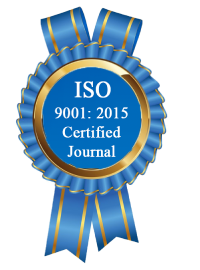| All | Since 2020 | |
| Citation | 172 | 110 |
| h-index | 7 | 5 |
| i10-index | 1 | 0 |
WJERT Citation 
Login
News & Updation
Abstract
OPTICAL COEFFICIENTS IN THE N(P)-TYPE DEGENERATE InP(1-x) Sb(x)-CRYSTALLINE ALLOY, DUE TO THE NEW STATIC DIELECTRIC CONSTANT-LAW AND THE GENERALIZED MOTT CRITERIUM IN THE METAL-INSULATOR TRANSITION (21)
Huynh Van Cong*, Michel Cayrol and Jöelle Sulian
ABSTRACT
In the n(p)-type - crystalline alloy, with , basing on our two recent works[1,2], for a given x, and with an increasing , the optical coefficients have been determined, as functions of the photon energy E, total impurity density N, the donor (acceptor) radius , concentration x, and temperature T. Those results have been affected by (i) the important new -law, developed in Equations (8a, 8b), stating that, for a given x, due to the impurity-size effect, decreases ( ) with an increasing ( ) , and then by (ii) the generalized Mott critical d(a)-density defined in the metal-insulator transition (MIT), ), as observed in Equations (8c, 9a). Furthermore, we also showed that is just the density of carriers localized in exponential band tails, with a precision of the order of , as that given in Table 4 of Ref.[1], according to a definition of the effective density of electrons (holes) given in parabolic conduction (valence) bands by: ), as defined in Eq. (9d). In summary, due to the new -law and to the effective density of electrons (holes) given in parabolic conduction (valence) bands , for a given x, and with an increasing , the numerical results of all the optical coefficients, obtained in appropriated physical conditions (E, N, T), and calculated by using Equations (15, 16, 20, 21), are reported in Tables 1, 2, 3n, 3p, 4n, 4p, 5n, and 5p in Appendix 1.
[Full Text Article] [Download Certificate]
